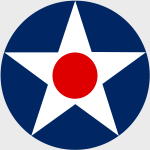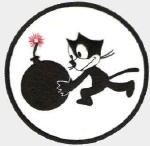Oxford AC082 USN Brewster F2A-1 Buffalo Fighter - VF-3, USS Saratoga (CV-3), 1939 (1:72 Scale)
"This nation will remain a neutral nation, but I cannot ask that every American remain neutral in thought as well. Even a neutral has a right to take account of facts, even a neutral cannot be asked to close his mind or close his conscience. I have said not once but many times that I have seen war and that I hate war; I say that again and again. I hope the United States will keep out of this war, I believe that it will. And I give you assurance and reassurance that every effort of your government will be directed toward that end. As long as it remains within my power to prevent there will be no blackout of peace in the United States."
- President Franklin Delano Roosevelt, September 5th, 1939
 Built by the Brewster Aeronautical Corporation in Queens, New York City, the F2A Buffalo was the first production monoplane fighter to enter service with the US Navy. The F2A was an all-metal, single-engine, single-seat, mid-wing monoplane with retractable landing gear and a tail hook for carrier operations. The control surfaces, i.e., ailerons, elevators and rudder, were metal framed but covered with fabric. The struts of the hydraulically-operated landing gear retracted into the underside of the wing while the wheels fitted into the stubby fuselage below the wings. The tail hook was fully retractable into the rear fuselage while the tail-wheel partially retracted into the rear fuselage. Because of its short wingspan, the F2A did not need a folding wing configuration to be accommodated on U.S. aircraft carriers.
Built by the Brewster Aeronautical Corporation in Queens, New York City, the F2A Buffalo was the first production monoplane fighter to enter service with the US Navy. The F2A was an all-metal, single-engine, single-seat, mid-wing monoplane with retractable landing gear and a tail hook for carrier operations. The control surfaces, i.e., ailerons, elevators and rudder, were metal framed but covered with fabric. The struts of the hydraulically-operated landing gear retracted into the underside of the wing while the wheels fitted into the stubby fuselage below the wings. The tail hook was fully retractable into the rear fuselage while the tail-wheel partially retracted into the rear fuselage. Because of its short wingspan, the F2A did not need a folding wing configuration to be accommodated on U.S. aircraft carriers.
The Buffalo entered squadron service in the summer of 1940 and it was not long before three serious defects were identified. The first was the landing gear; it was not strong enough for carrier operations. Brewster strengthened two weak struts but a real fix would require a redesign of the aircraft. The second defect was identified by reports from Europe which indicated that the Buffalo did not meet the performance criteria of other aircraft then in combat, e.g., armor protection, self sealing fuel tanks, etc. Armor protection was added to the F2A-3 resulting in a heavier, unstable aircraft. One solution was to use a more powerful Pratt & Whitney engine but this would require a redesign of the aircraft. The third problem was the Brewster company management who had a habit of promising more than they could deliver resulting in serious delays in the deliveries of the aircraft. The final straw came when the Navy realized that the Grumman F4F-3 Wildcat was a superior aircraft in virtually every respect so no further Buffaloes were ordered.
Pictured here is a 1:72 scale replica of a US Navy F2A-1 Buffalo fighter that was attached to VF-3, then embarked upon the USS Saratoga (CV-3) during 1939.
Sold Out!
Dimensions:
Wingspan: 5-3/4-inches
Length: 4-1/4-inches
Release Date: July 2018
 Historical Account: "Felix the Cat" - Fighter Squadron 3 or VF-3, was an aviation unit of the United States Navy. Originally established on July 1st, 1922, it was disestablished in May 1924.
Historical Account: "Felix the Cat" - Fighter Squadron 3 or VF-3, was an aviation unit of the United States Navy. Originally established on July 1st, 1922, it was disestablished in May 1924.
The original "Felix the Cat" squadron was VF-3. After the Battle of Midway, VF-3 and VF-6 swapped designations on July 15th, 1943, resulting in a three-year controversy as to which squadron owned the Felix name and emblem until VF-3 was re-designated VF-3A on November 15th, 1946, and awarded the official approval to adopt Felix the Cat by the Chief of Naval Operations (CNO). VF-3A was then re-designated VF-31 on August 7th, 1948.
The emblem and mascot is the famous cartoon character Felix the Cat, running with a large spherical black bomb with a lit fuse. The yellow field and outline were omitted from the aircraft and four stars at the end of a pair of sweeps were added. This emblem can be seen on the fuselage of the aircraft above the wing.
Several well-known aviators have flown with Felix on their shoulders, including Charles Lindbergh and Butch O'Hare.


